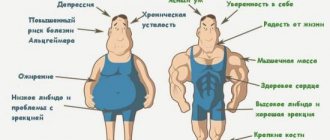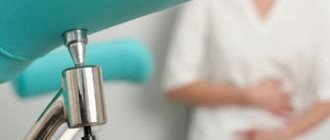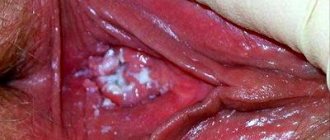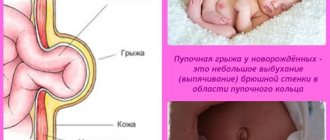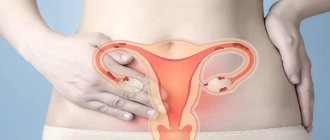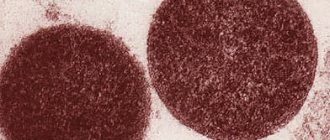Menopause is a difficult but natural period that every woman will have to go through. Its arrival signifies the decline of reproductive function and the end of menstruation. Traditionally, menopause occurs at 45-55 years of age, but the timing of its arrival largely depends on many factors. The period accompanied by the physiological transition from the reproductive to the non-reproductive phase is called menopause. At this time, a number of hormonal changes and characteristic symptoms are observed, the severity of which depends on the quality of the woman’s health. However, in certain situations, menopause can occur earlier (before age 40) or later (after age 56). This period can be quite difficult for a woman, but it can be significantly alleviated with the help of well-chosen therapy.
Menopause and menopause: step by step
Premenopause or the initial stage of decline of the reproductive system. Menstruation comes late or a little earlier, becomes longer, for some it is more abundant, for others it is in the form of a spot. The first symptoms associated with ovarian deficiency appear: hot flashes, headaches, sleep disturbances, sweating, and mood becomes uneven. A persistent increase in follicle-stimulating hormone (FSH) in the blood and urine serves as a laboratory marker of the onset of premenopause. The duration of the period is on average from 1.5 to 4-5 years.
Menopause. If a year or a little more has passed since the last menstruation, this means a transition to the age of early menopause. The function of the ovaries finally fades away, but the changes associated with this change the character. Hot flashes and night sweats weaken, the nervous system adapts (especially if a woman takes medications prescribed by a doctor). Menopause lasts about a year, although longer periods are possible. It is noteworthy that in everyday life it is premenopause and the menopausal period that are called menopause.
Postmenopause is the period that begins after 12 months of absence of menstruation. At this time, a deficiency of female hormones affects the functions of many organs and systems.
Of course, the best way to determine whether menopause is approaching is to consult a gynecologist. He will not only conduct an examination, compare complaints, but also prescribe additional tests and examinations. However, the reality is that it is at the age of 45-55 that a woman seems to gain her wings again, works enthusiastically, takes care of her personal life, and starts a new business or hobby. And this rhythm is more than beautiful - there is no time to grow old. But at the same time, visiting a doctor becomes somewhat difficult.
For those who do not want to “accidentally” experience menopause, the FRAUTEST menopause home diagnostic test will help, which detects a persistent increase in FSH in the urine. The technique for performing it is straightforward and similar to a pregnancy test. It should be carried out in the initial period of menopause - premenopause. You need to collect a portion of urine in a small container, immerse the test strip in it up to the mark and evaluate the result within the time specified in the instructions. The instructions also clearly indicate the days of the cycle on which the test should be carried out. Only two tests performed at an interval of a week can indicate that you are premenopausal.
Development mechanism
Throughout life, various physiological hormonal changes occur in the female body. The first important milestone is the onset of menstruation in girls under 14 years of age. During this time and until the onset of menopause, the woman is in the reproductive phase, which means regular ovulation and menstruation, provided that conception does not occur. Any irregularities in the menstrual cycle during this period, for example, amenorrhea or dysmenorrhea, are evidence of the development of certain diseases and require the earliest possible start of treatment. Otherwise, severe complications may develop, leading to infertility and early menopause.
As women age, each woman enters perimenopause at different times. This term refers to the period of time from 2 to 8 years preceding the complete cessation of menstruation. It is this period that presents the greatest difficulties for a woman and is traditionally called menopause. During it, complex hormonal changes occur in the body, caused by the extinction of ovarian activity, which makes itself felt by fluctuations in the psycho-emotional state, disruption of the flow of metabolic processes and other characteristic signs of menopause.
At this time, a lot of natural processes occur simultaneously, which ultimately lead to the cessation of menstruation. Every woman is born with a certain supply of follicles. Every month, one of them matures, undergoes a series of changes and “releases” an egg, which goes into the fallopian tube and is ready for fertilization. This process is called ovulation. If conception does not occur, the egg along with the endometrium is rejected and menstruation occurs. But with each ovulation, the number of follicles decreases by 1.
Therefore, by the age of 45-55, their number decreases, and this is accompanied by hormonal changes, leading to a decrease in the activity of follicle maturation. Therefore, so-called anovulatory cycles periodically occur, i.e. without ovulation.
Against the background of a decrease in the number of follicles in the ovaries, a decrease in their sensitivity to hormones synthesized by the pituitary gland is observed. This entails a decrease in the rate of follicle maturation. There is also a reduction in the amount of hormones synthesized by the pituitary gland and the ovaries themselves, which further aggravates the situation and provokes the development of menopause with all its typical symptoms. As the production of estrogen and progesterone decreases, the adrenal glands, adipose tissue and other hormone-producing organs begin to work more actively. As a result, there is a significant increase in the load on them, which becomes the cause of the development of menopausal syndrome.
Various diseases contribute to an earlier decrease in the sensitivity of the ovaries to hormones or a decrease in the estrogens they synthesize, which provokes an earlier onset of menopause.
The period that occurs after the completion of the last menstruation and lasts until the end of life is called postmenopause. At this time, all signs of menopause subside as the body adapts to new living conditions. But along with a sharp decrease in the amount of sex hormones and the resulting metabolic disorders, significant prerequisites are created for the development of various diseases that can pose a serious threat to a woman’s life. It is during postmenopause that diagnoses such as osteoporosis, hypertension, atherosclerosis and their complications are often made.
Menopause and its symptoms: everything can be solved...
The age at which menopause occurs is very individual, but is often inherited in families: early menopause in a mother is 50-75% likely to be the same in her daughter. If a woman smokes a pack of cigarettes a day for several years, then menopause also occurs earlier. Therefore, it is better to avoid bad habits, and in case of hereditary early menopause, listen more carefully to your feelings and, if necessary, visit a doctor. The fact is that many of the symptoms of menopause that women are so afraid of can be avoided or their severity can be significantly reduced.
pros
Some ladies consider late fading a virtue and do not fear for their health.
Experts highlight several relative advantages:
- High estrogen levels at age 55 help prevent the development of osteoporosis and prevent calcium from being washed out of bone tissue. It has been noted that women with delayed menopause are less likely to experience joint pain.
- The woman's psychological state is more stable. No sweating, mood swings or other symptoms.
- There are no brain dysfunctions. Memory and attention do not suffer, and the chance of developing senile dementia is reduced.
- Sleep is not disturbed, there are no serious health problems. Many diseases do not develop or become complicated.
- The lady looks younger than her peers, which further improves her mood and self-esteem.
- The cardiovascular system functions stably. With the late onset of menopause, pathologies in this area are less likely to appear.
An additional plus for some is the opportunity to have a child even at this age.
Hot flashes, sudden feeling of heat
This feeling is very typical of menopause. It is associated with a disorder of thermoregulation due to a lack of estrogen. Suddenly the woman feels as if she is bursting with heat from within, it covers her face, neck, chest, and arms. Shortness of breath occurs due to lack of air, sweat is released sharply, and the skin often turns red and becomes covered in perspiration. The heart may beat faster, you may feel dizzy, or feel nauseous. The duration of a hot flash is short - from 20 seconds to 3 minutes, but they can occur almost hourly and this greatly affects social life and well-being.
Many people note that a sudden hot flash is associated with stress, hot drinks or spicy food, or a visit to the bathhouse.
Reviews
“Menopause began at the age of 55, the specialist said it was too late. I felt bad, so I prescribed Klimonorm and other medications. I took it according to the regimen, and after 2 weeks I felt much better.” Larisa, 57 years old.
“My late menopause was easy. The doctor prescribed only Glycine and Vitrum vitamins to eliminate complications. After the course, all symptoms disappeared.” Alevtina, 55 years old.
“At the very first symptoms of menopause, I consulted a doctor, because my condition worsened sharply and I suffered from hot flashes and high blood pressure. After the examination, they prescribed the herbal drug Klimadinon, which helped me a lot.” Natalya, 56 years old.
Dry skin and vaginal mucosa
Due to hormone deficiency, the skin loses its regenerative abilities, its lipid layer is lost, and moisture decreases. Dry, thinned, a network of wrinkles... all this does not have the best effect on your appearance and mood.
Menopause and associated changes provoke loss of moisture from the mucous membrane of the external genital organs. It quickly becomes dry, easily injured, loses elasticity, and looks flabby. Sexual intercourse, and sometimes even hygiene procedures, cause pain and burning. Intensification of dystrophic processes can lead to kraurosis.
Pain, a feeling of sand or small foreign bodies, a burning sensation that intensifies when urinating until it hurts, prolapse of the genitals - the older the woman, the more severe the symptoms can be.
Diagnostics
The first stage of the diagnostic examination will be to interview the patient and identify the possible cause of the deviation. The specialist must know about all chronic diseases, hereditary factors, and surgical interventions in the past.
The onset of the first menstruation, the conditions of pregnancy and the postpartum period play an important role.
After the interview, an inspection is carried out. The doctor assesses the condition of the skin and mammary glands. Additionally, the patient is sent to a gynecologist for a thorough examination using mirrors. Sometimes an ultrasound is indicated if pathology of the uterus and appendages is suspected.
A blood test for hormones is required, blood pressure and pulse are measured. If necessary, an electrocardiogram can be done. Additionally, the specialist determines body weight; sometimes a study of the functions of the thyroid gland is required. Based on the data obtained, the direction of therapy is determined.
Popular questions
Good afternoon.
Three years ago, menopause began, the doctor attributed it to climonorm, everything was wonderful. Three years later, another doctor prescribed Femoston 1/10, hot flashes again, I feel worse, now the third doctor has advised Angelique, please advise what to do? Hello! Menopausal hormone therapy involves several stages of changing drugs depending on age, menstrual response and concomitant diseases. If your age is under 55 years, then you can return to taking Klimonorm.
Hello, hot flashes have begun, mood changes, (menopause) the uterus was removed due to fibroids. What can you take in combination with vitamins to reduce this condition?
Hello! You can start taking Ginocomfort climafemin 1 t once a day for 3 months to relieve vegetative storms.
Hello, burning sensation in the vagina, menopause, the doctor prescribed Levomekol ointment, what else can I use?
Hello! In your case, you can use Ginocomfort gel with mallow extract, 1 dose 1 time per day for 10 days, and then 2 times a week for a long time. This product contains herbal components, bisabolol and panthenol, which will moisturize and restore the mucous membranes of the genital tract. In the absence of contraindications, it is possible to use estriol-containing drugs, for example, Orniona cream, which will be etiotropic therapy.
Hello, I’m 47 years old and have been in menopause for 5 years now. At 42, my periods ended and that’s it, at first I didn’t take anything, my condition worsened, hot flashes and mood swings, poor sleep. 3 years ago, on the doctor’s recommendation, I took Femoston 1/5 for a year. I took it for 1 year, felt good, stopped taking it, after all, it’s hormones, now I feel bad again. Hot flashes, increased blood pressure, palpitations, poor sleep, hot flashes mostly at night and depression. Tell me, could Gynocomfort Klimafemin help me or should I take Femoston again?
Hello!
At this stage, you can start by taking Gynocomfort climafemin. This will improve your well-being and you will have time to conduct additional examinations before resuming menopausal hormone therapy, if necessary: pelvic ultrasound, mammography, lipid spectrum, general blood test, TSH level, consultation with a therapist and obstetrician-gynecologist, smears for flora and oncocytology. For an accurate diagnosis, contact a specialist
What exactly does hormone replacement therapy look like and when can it start?
Sex hormones are prescribed when menopausal symptoms become so bothersome that they interfere with daily activities and interfere with normal functioning. HRT reduces the frequency of hot flashes by more than 80% and at the same time reduces the duration and severity of individual attacks. Also, vaginal dryness and atrophy, as well as insomnia, are effectively eliminated by taking hormones. A combination of estrogen and progesterone is usually used because this combination avoids the negative effects of estrogen on the formation of uterine tumors.
Different drugs contain different types of estrogens and progestogens. Therefore, drugs can vary significantly in their therapeutic properties, side effects, and dosage regimens.
Progesterones can be taken continuously or cyclically, with a break of several days or even weeks. Oral medications, skin patches, and vaginal gels can be purchased at the pharmacy. Patches and ointments are a much safer option as they reduce some systemic effects such as vascular thrombosis.
Hormonal skin patch
The choice of treatment depends on the patient's specific symptoms. When only vaginal dryness is present, it is preferable to use estradiol gel (a form of estrogen) alone. However, hot flashes already require oral treatment or the use of transdermal time-release hormone patches. because they reduce some systemic effects, such as the formation of vascular thrombosis.
The decision to initiate HRT should always be made after careful consideration of the benefits and risks, and the exhaustion of other therapeutic options. In general, the lowest effective dose should be taken for the shortest possible time.
How does menopause proceed after 50 years?
Just like timely menostasis, late menopause can occur in different ways. Often patients with this feature note a sharp decrease in activity and severe symptoms, but others, on the contrary, can tolerate the menopause very calmly. It depends on how quickly your estrogen levels drop. If the drop in hormone levels occurs smoothly, the woman does not experience severe unpleasant symptoms, but most often at this age, menopause still causes serious inconvenience. Women over 50 years of age should pay special attention to bleeding. If menstruation comes chaotically and is characterized by a large volume of blood, and also brings with it pain and discomfort, you should urgently consult a gynecologist.
Interesting! According to research results, menostasis after 55 years is observed in 5% of patients, and 80% of them are mothers of many children or gave birth to a child after 40 years.
What side effects can you expect from HRT? Who can't take hormones?
The use of estrogens and progesterones is associated with the following side effects:
- Very common (> 1/10): breast tenderness, occasional vaginal bleeding.
- Common (1/10-1/100): headache, migraine, nausea, fluid retention, peripheral edema, weight gain.
- Uncommon or rare (less than 1/100): vomiting, abdominal pain, venous thrombosis, gallstones.
Hormone use is associated with a small increase in the incidence of breast cancer. Blood clotting also occurs more frequently in HRT users. For these reasons, the popularity of this therapy has declined significantly in recent years, with many women refusing hormonal treatment despite the extremely distressing symptoms of menopause.
However, it should be emphasized that with short-term use and a healthy lifestyle, this additional risk is small.
Hormone replacement therapy should not be used in the following cases:
- high risk of breast cancer or gynecological tumors (for example, a family history of these tumors);
- venous thrombosis;
- cholelithiasis;
- high risk of heart and circulatory system diseases (heart attack, stroke);
- liver failure.
Risk of developing breast cancer
Other measures to help the body during menopause include:
- following a diet based on fruits, vegetables and grains;
- maintaining physical activity as much as possible in the form of walking, daily exercises;
- using gentle natural remedies to eliminate individual symptoms. For example, to eliminate the unpleasant symptoms of vaginal dryness, special moisturizing gels Ginocomfort are often used. Their high efficiency and complete safety make it possible to quickly get rid of the unpleasant feeling of dryness. Also, such gels have an enveloping effect, preventing the disruption of microflora and the appearance of the inflammatory process.
To improve the quality of life of a woman during menopause, specialists from the pharmaceutical company VERTEX have developed a dietary supplement GINOCOMFORT® Climafemin, which has a full list of necessary documents and certificates. Thanks to its natural, carefully balanced composition, this product helps alleviate the intensity of the symptoms of menopause and helps preserve the beauty and youth of a woman for as long as possible.
Symptoms during menopause
GINOCOMFORT® intimate moisturizing gel eliminates dryness, itching and burning in conditions of hormonal imbalance, including during menopause.
It has a long-lasting moisturizing effect on the vaginal mucosa and has a softening and anti-inflammatory effect. GYNOCOMFORT® helps you forget about unpleasant sensations and improve your quality of life. Sources:
- MODERN RECOMMENDATIONS FOR THE USE OF HORMONE REPLACEMENT THERAPY IN MENOPAUSED WOMEN. Grigoryan O.R., Melnichenko G.A. // Diabetes. – 2004. – No. 4. – p. 56-59.
- INFLUENCE OF OSTEOPOROSIS ON THE QUALITY OF LIFE OF WOMEN DURING MENOPAUSE. Trushina A. S. // Journal of the Grodno State Medical University. – 2010. – No. 3. – P. 27-30.
- ANXIETY-DEPRESSIVE DISORDERS AND QUALITY OF LIFE IN POSTMENOPAUSAL WOMEN. Lareva N.V., Govorin A.V., Kalinkina T.V. // Kazan Medical Journal. – 2008. – No. 4. – P. 432-437.
- Optimization of treatment of menopausal syndrome. Abdulkadyrova M.N. // Author's abstract. diss. Ph.D. honey. Sci. - M, 2003. - P. 21.
- Psychiatric aspect of menopausal syndrome: clinical picture and treatment. Tyuvina N.A. and others // Obstetrics and gynecology. - 1993. - No. 4. - P. 34–37.
- Grandaxin in the correction of psychoemotional and neurovegetative disorders during menopause and surgical menopause. Dobrokhotova Yu.E. and others // Probl. reproduction - 2005. - No. 6. - P. 67–69.
Prevention of menopausal syndrome
All women, without exception, experience menopause, but not everyone experiences menopausal syndrome.
Factors that determine the physiological course of menopause include:
- unburdened heredity;
- normal course of childbirth and pregnancy;
- normal body weight;
- physical activity;
- absence of occupational hazards;
- balanced diet;
- proper organization of work and rest;
- optimistic attitude towards life;

